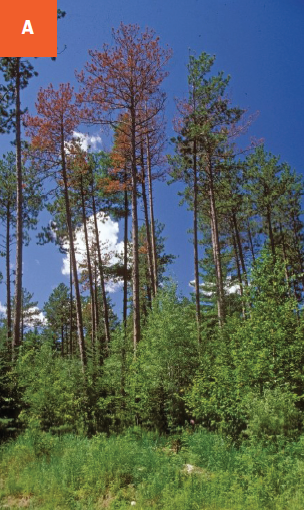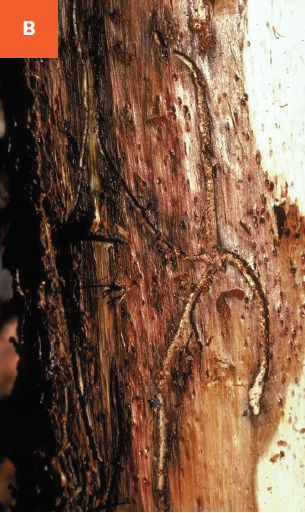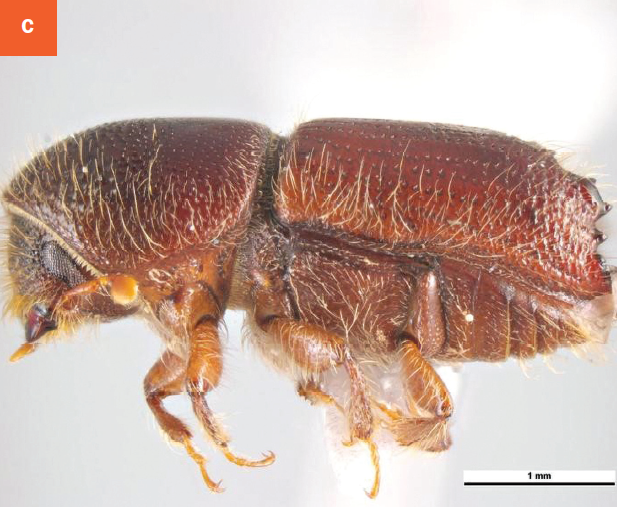Engraver Beetles
Ips spp.
HOST Pine, spruce
DAMAGE/SYMPTOMS Dieback at the top of the tree is evident with Ips beetle infestations but this can also be confused with many abiotic-related issues. At the base of the tree, the beetles leave a yellow or reddish/brown dust from boring activity. Shot-hole sized exit holes are evident on the outside of the bark. Galleries from larval feeding are apparent just below the outer bark.
LIFE CYCLE Adults overwinter underneath the bark. The larvae create galleries surrounding egg-laying areas. There can be up to four generations per year.
MANAGEMENT Once Ips beetles are in the tree, it is hard to kill the beetle and to correct the damage. Slash should be piled and burned prior to adult beetle emergence in May. Beetles can potentially be prevented from infecting other trees. Preventive contact insecticides (active ingredients bifenthrin, permethrin, and carbaryl) can be sprayed on the trunk of the tree prior to egg laying in May or to protect surrounding healthy trees.
A Pines damaged by Ips beetle infestations. B Galleries from Ips beetles. C Ips pini adult



